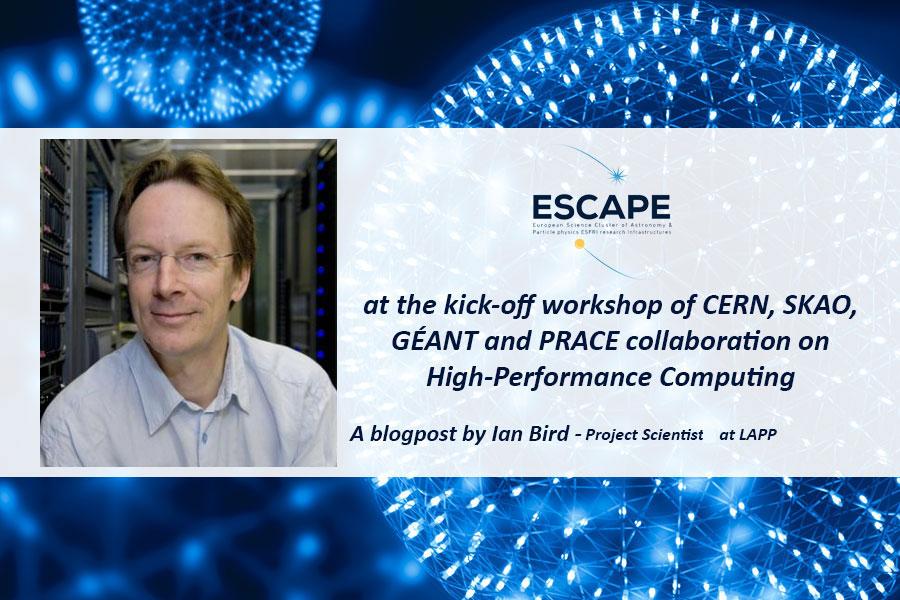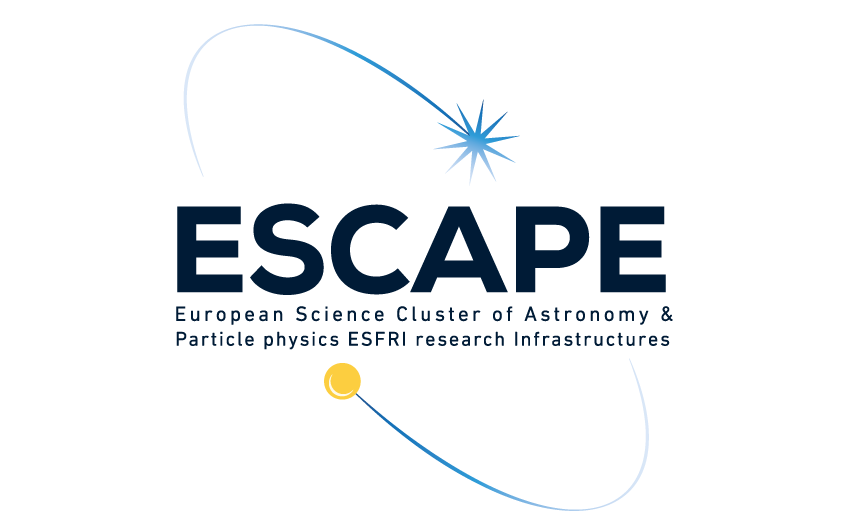

I attended the CERN, SKAO, GÉANT and PRACE collaboration on High-Performance Computing workshop to initiate the recently signed 4-way agreement between CERN, SKAO, PRACE and GÉANT. I had been invited to present ESCAPE and potential synergies with this collaboration.
Having been involved in early discussions on that collaboration it was encouraging to see it take shape and how much interest and commonality there was between the players. Underlying the agreement is the recognition that both HL-LHC and the SKA are global international scientific collaborations that will produce huge volumes of data (Exabytes per year) on a similar timescale, and will require significant resources to process and analyse that data. High Performance Computing (PRACE) and state of the art networking (GEANT) will be key enablers for both SKA and HL-LHC data processing and analysis. SKA and HL-LHC scientists have long recognised that both face very similar data management and computing challenges. Indeed that recognition, together with many commonalities of the other ESFRI sciences in ESCAPE is one of the underpinnings of ESCAPE itself. Of course the entire discussion was framed within the evolving European Open Science Cloud (EOSC), and there is a strong desire, expressed clearly, that Europe should have an integrated ecosystem of facilities and services serving the science, and that the days of being able to independently construct facilities for each scientific collaboration are past.
For those reasons a lot of the goals of ESCAPE are very well aligned with the aims of the specific collaboration discussed in the workshop. In fact, in my view, ESCAPE and the work plan already discussed, is actually one of the mechanisms through which the collaboration aims can be realised. ESCAPE itself has the stated goals of integrating HPC (PRACE) resources to allow data to be served seamlessly to those resources, and of course GEANT networking underpins the data lake infrastructure itself.
There were presentations from ESCAPE "Data Infrastructure for Open Science - DIOS" team and ESCAPE "ESFRI Science Analysis Platform - ESAP" team, and the overall conclusion is that there are many points of coincidence between the ESCAPE project and this collaboration, and there are two specific demonstrators that hopefully we can do together – one is an authenticated workflow demonstrator, that is fully in line with what we need to do in DIOS and ESAP; and the other is a data access demonstrator to deliver data from ESCAPE into an HPC site and process it there.
I think that this is an example of how the various aspects of work are all coming together across projects and initiatives, to better serve the science.
Views
38,764

